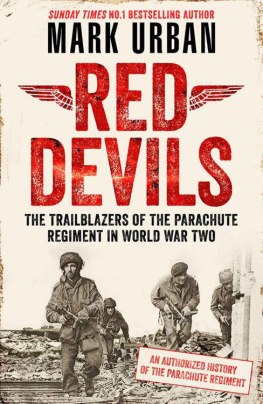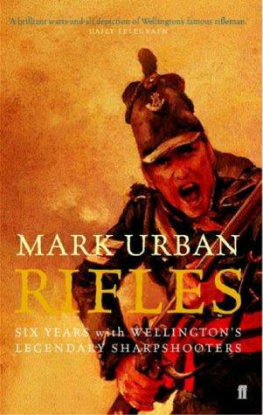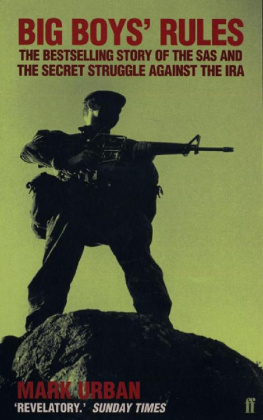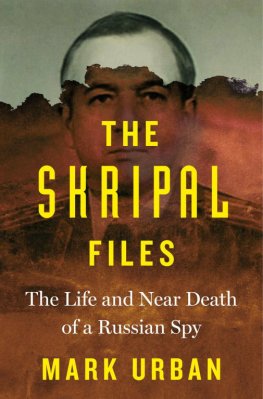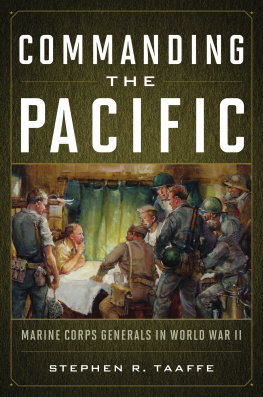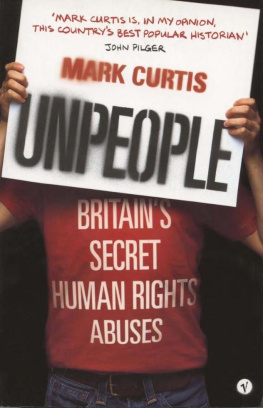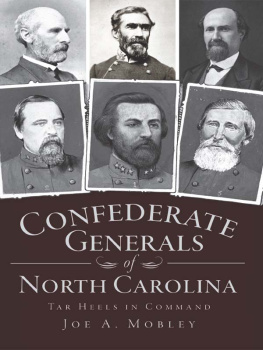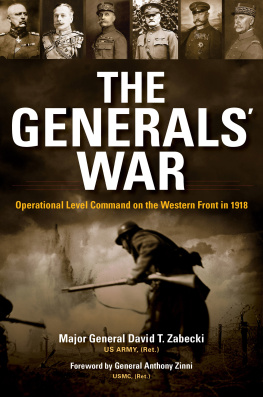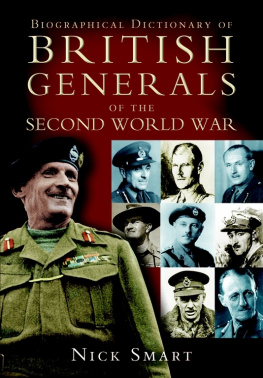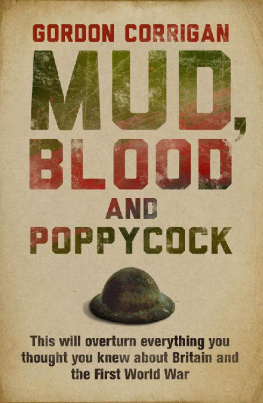Generals
Ten British Commanders who Shaped theWorld
MARK URBAN
faber and faber
Firstpublished in 2005 by Faber and Faber Limited 3 Queen Square London WCIN AU
Photosetby RefineCatch Ltd, Bungay, Suffolk
Printedin England by Mackays of Chatham plc Chatham, Kent
Allrights reserved Mark Urban, 2005 Maps Andras Bereznay, 2005
Theright of Mark Urban to be identified as author of this work has been assertedin accordance with Section 77 of the Copyright, Designs and Patents Act 1988
A CIPrecord for this book is available from the British Library
ISBN 0-571-22485-7
Contents
Listof Illustrations
Listof Maps
Introduction
GeorgeMonck (1608-1670)
JohnChurchill (1650-1722)
WilliamHowe (1729-1814)
PrinceFrederick, Duke of York (1763-1827)
ArthurWellesley (1769-1852)
CharlesGeorge Gordon (1833-1885)
(Horatio)Herbert Kitchener (1850-1916)
EdmundHenry Hynman Allenby (1861-1936)
JohnFrederick Charles Fuller (1878-1966)
BernardLaw Montgomery (1887-1975)
OfBritish Generals...
Illustrations
1 General George Monck,1665 by unknown artist, after Samuel Cooper
2 Cromwell at Dunbar,1650 by Andrew Carrick Gow
3 The Restoration: Charles IIlands at Dover and is greeted by his supporters
4 John Churchill, 1702attributed to M. Dahl
5 OudenaardeA Cavalry Skirmish by Robert Alexander Hillingford
6 The Battle of Blenheim, 13 August 1704 by JohnWootton
7 The Death of GeneralWarren at the Battle of Bunkers Hill, 17th June 1775by John Trumbull
8 Sir William Howe,Commander in Chief of the British Army by Charles MacKubin Lefferts
9 Portrait of HRH FrederickAugustus, Duke of York, in the uniform of the Colonel of theColdstream Guards by John Hoppner
10 A View of the West FrontHorse Guards, 1758 attributed to Samuel Wale
11 Wellingtonas Field Marshal and Duke in 1814
12 Cuirassiers Charging theHighlanders at the Battle of Waterloo on 18th June 1815 by FelixPhilippoteaux
13 Charles George Gordon,British officer and Pasha and governor general of Sudan from 1877,photograph c. 1880
14 La tete de Gordonofferte au prisonnier des mahdistes, Khartoum, 26 January 1885
15 TheBattle of Abu Klea, 1885 by William Barnes Wollen
16 Kitchenersrecruiting poster
17 The Charge of the 21stLancers at the Battle of Omdurman by Richard Caton Woodville
18 EdmundAllenby
19 RoyalHorse Artillery in action near Gaza in 1917
20 GeneralAllenby at the Jaffa Gate in Jerusalem, December 1917
21 Pathsof Glory by CRW Nevinson
22 JF C Fuller
23 BritishTank, Cambrai offensive, 1917
24 HitlersBirthday Parade in 1939
25 Montgomeryand Eisenhower during a pre-D-Day exercise
26German Troops advancing during the Battle of the Bulge
27Winston Churchill, General Alan Brooke and Montgomery lunching beside the Rhine
PICTURESIN TEXT
The Captaine Generali of all his MajestiesLand forces depicted in later life (and indeed more than a century after hisdeath). He had already emerged by the early 1800s as a hero for Tories and afigure of suspicion to Whigs. Etching by an unnamed artist published byHarding, 1800.
This early 19th Centurydepiction of Marlborough shows him in Napoleonic period uniform. A Frenchengraving, it serves to illustrate how far the general had entered the psycheof that nation as the personification of the British bogeyman. Unattributedwoodcut on an early 19th century French song sheet in BibliothequeNationale, Paris.
William Howe somehow managed to livethrough the golden age of British caricature without being lampooned. Insteadwe have only such engravings by which to judge him. We know, in any case, thatby the time he assumed command in America he had lost many teeth and that agehad also had its impact on his mental faculties. Unattributed engraving.
The Duke of York caricatured shortlyafter his marriage to Princesse Friedericke of Prussia. This is one of thekindest depictions of him from an age where satirists were often merciless.Even so, his double chin and ample girth are drawn in deliberate contrast tohis brides delicate physique. Seen this way, as the stout Englishman,Frederick seems to personify John Bull. Etching by James Gillray,London, 14 December 1791.
This arresting image by William Heath wasone of the most famous of the Wellington Boot. Caricaturists hardly botheredwith Wellington before Waterloo and the few pre-1815 cartoons that exist bearlittle resemblance to him. It was once the Duke set himself on a politicalcareer (and indeed became a familiar figure on Londons streets) that heevolved into an irresistible target for lampoon. Heath was the most skilful ofWellingtons mockers and many of his drawings reflected the British unease withthe victorious general who had turned to politics.
Gordon is depicted by Punch, holed up inKhartoum and wondering whether he has spotted, the quick gleam of Englishsteel, or but a desert dream. This image dates from the spring of 1884 whenpublic pressure on Gladstone to send a rescue mission had reached its peak. Theearlier satirical styles of Gillray or Heath had by this time been replaced byone of irony-free Imperial propaganda. Punch, April 12, 1884.
Introvert and diffident, Kitchenersimage was defined by others. Newspapermen in Sudan wrote him up as a brutalunfeeling easterner; others later suggested he had the machine-likeefficiency needed to beat the Germans. This postcard dates from 1914,redefining K of K (Earl Kitchener of Khartoum) once again as the paragon ofBritish patriotism.
Sacres 1918 caricature of Allenbydisplays his public persona. It calls to mind novelist C.S. Foresters lineabout, a huge man with a face the colour of mahogany. The General dominatedthose around him with brutal cross-examinations, uncompromising orders and arefusal to tolerate failure. By contrast, the private Allenby was a lovinghusband and father, immensely well read and acutely sensitive to the historicalramifications of campaigning in Palestine.
The British fascist magazine Actiondepicted Fuller as a scarily bright ideologue. To modern eyes the shape givento his head and ears suggest an almost alien lack of emotion. Fuller joined thefascist bandwagon in the late 1930s when many other Britons were leaving it.His identification with such ideas and admiration for Hitler have made it hardever since to assess his military ideas dispassionately. Action,Issue No. 59.
Monty never missed an opportunity topublicise himself and he used this image for his 1943 Christmas card. It frameshis features with symbols emphasising his identity as a soldier, notably hisRoyal Tank Regiment beret, marks of rank and medal ribbons. In this senseself-image coincides with legacy, for it is as a consummate professional thathe is best remembered.
Illustrations in the plate sections arereproduced by kind permission of the following: National Army Museum, London (1,4, 6, 10, 15); Imperial Defence College, Camberley / Bridgeman ArtLibrary (2); Mary Evans Picture Library (3); Private Collection, Bonhams,London / Bridgeman Art Library (5); New York Historical Society / Bridgeman ArtLibrary (7); Museum of Fine Arts, Boston / Gift of Howland S. Warren /Bridgeman Art Library (8); Private Collection, Christies Images / BridgemanArt Library (9); Victoria and Albert Museum, London (11); Apsley House, TheWellington Museum, London / Bridgeman Art Library (12); AKG Images (13, 14, 21,23); Imperial War Museum (16, 18, 19, 20, 22); Walker Art Gallery (17); Corbis (24,26, 27); Getty Images (25).
Next page

